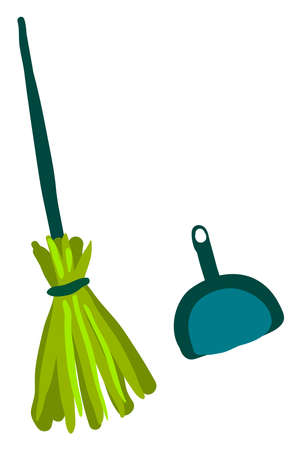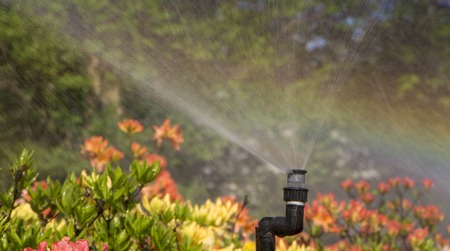Introduction to Backyard Irrigation Rules in the U.S.
Across the United States, backyard irrigation is more than just a matter of keeping your lawn green—it’s a subject shaped by a complex web of legal requirements and water regulations that every homeowner needs to understand. As water scarcity and environmental conservation become ever more pressing concerns, states have enacted unique laws to manage how residents use water for landscaping and gardening. These rules can dictate everything from when you can water your lawn to the types of irrigation systems you’re allowed to install. Not only do these regulations help conserve precious resources, but they also reflect broader efforts to ensure sustainable water management across diverse climates and regions. For homeowners, staying informed about local irrigation laws isn’t just about compliance; it’s about taking responsibility for protecting community water supplies and supporting long-term environmental health. Whether you live in drought-prone California or the wetter Midwest, understanding your legal obligations—and adapting your irrigation practices accordingly—is an essential part of responsible homeownership in America.
2. Water Rights and Legal Frameworks
Understanding water rights is essential for any homeowner planning backyard irrigation, as the legal frameworks governing water usage differ significantly across the United States. Two primary doctrines—riparian rights and prior appropriation—form the backbone of state-level water laws, influencing who can use water, how much they can use, and for what purposes.
Riparian Rights Doctrine
The riparian doctrine is most common in Eastern states where water is relatively abundant. Under this system, landowners whose property borders a water source (such as a river or lake) have the right to make reasonable use of that water, provided it does not harm downstream neighbors. This doctrine tends to support flexible and communal sharing of water resources.
Key Features of Riparian Rights:
- Tied to land ownership adjacent to a natural watercourse
- Allows “reasonable use” as long as it does not negatively impact other users
- Typically applies in wetter climates with plentiful surface water
Prior Appropriation Doctrine
In contrast, the prior appropriation doctrine dominates the Western states, where arid conditions make water scarcer and more valuable. Here, rights are granted based on a “first in time, first in right” principle—meaning those who first divert water for beneficial use hold priority over later users, regardless of land location relative to the water source.
Key Features of Prior Appropriation:
- Rights are based on chronological order of first beneficial use (often termed “senior” or “junior” rights)
- Not dependent on land proximity to the water source
- Strictly regulated; unused rights can be forfeited (“use it or lose it”)
- Common in drier regions with limited surface water availability
Influence on Backyard Irrigation Possibilities
The doctrine applied by each state determines how easily homeowners can access and use water for irrigation. In riparian states, residents often face fewer restrictions if their property adjoins a natural body of water. In prior appropriation states, securing irrigation rights may require permits or purchasing established rights from others.
Comparison Table: Riparian vs. Prior Appropriation States
| Aspect | Riparian Doctrine (East) | Prior Appropriation Doctrine (West) |
|---|---|---|
| Basis of Rights | Land adjacency to waterbody | Chronological order of beneficial use |
| User Flexibility | Shared & flexible among owners | Rigid; seniority matters |
| Main Restriction | No unreasonable interference with others | “Use it or lose it”; strict regulation |
| Irrigation Access for Homeowners | Easier for waterfront properties | Dependent on obtaining or purchasing rights |
| Typical U.S. Regions | Southeast, Midwest, Northeast | Southwest, Rocky Mountain West, California |
Homeowners should research their states prevailing doctrine before installing irrigation systems to ensure compliance with local regulations and avoid potential legal disputes.

3. State-by-State Overview of Irrigation Regulations
Backyard irrigation rules in the United States vary significantly from state to state, reflecting local water availability, climate conditions, and legal traditions. Understanding these differences is crucial for homeowners who want to remain compliant while maintaining healthy landscapes. Below is a comparison of key state-specific regulations focusing on permitting requirements, water source restrictions, and enforcement practices across major regions of the country.
Permitting Requirements
Many states require permits for certain types of backyard irrigation systems, especially if they involve drilling wells or connecting to municipal supplies. For instance, California mandates permits for most irrigation installations that connect to public water systems, while Texas often requires permits only when significant modifications are made or new wells are drilled. In contrast, states like Florida may have more lenient requirements for small-scale residential systems but still regulate larger setups or those tapping groundwater sources.
Water Source Restrictions
The type of water used for irrigation is also subject to regulation. Western states, such as Colorado and Arizona, enforce strict controls over surface and groundwater usage due to chronic drought concerns. Homeowners in these areas might be limited to using treated municipal water unless they secure special rights or permits for alternative sources like rainwater harvesting. In the Southeast, states like Georgia allow rain barrels and greywater reuse under specific guidelines but restrict direct withdrawal from streams or lakes without approval.
Regional Enforcement Practices
Enforcement approaches differ widely as well. Northeastern states, including New York and Massachusetts, tend to focus on education and voluntary compliance, issuing warnings before imposing fines for violations such as watering during bans. By contrast, some Southwestern states, notably Nevada and California, employ stricter penalties—including substantial fines—for unauthorized irrigation or failure to adhere to mandatory watering schedules during drought periods.
Summary Table: Major Regional Differences
– West: Strict permitting and water source restrictions; active enforcement
– Midwest: Moderate regulation; focus on agricultural impact
– Southeast: Flexible rules with attention to conservation practices
– Northeast: Emphasis on voluntary compliance and education
This diversity highlights the importance of checking with local authorities or state agencies before installing or modifying any backyard irrigation system.
4. Permits, Restrictions, and Local Ordinances
When it comes to backyard irrigation in the United States, homeowners should be aware that state and local governments often enforce a variety of regulations to ensure responsible water use. These rules commonly involve obtaining permits, adhering to specific watering schedules, and following restrictions regarding the types of irrigation systems allowed. Understanding these requirements can help you avoid fines and contribute to community-wide water conservation efforts.
Typical Permit Requirements
In many U.S. states, installing or significantly modifying an irrigation system—especially those connected to municipal water supplies—may require a permit from your city or county. These permits help local authorities monitor water usage and ensure that installations meet safety and efficiency standards.
| State/Region | Permit Needed? | Who Issues Permit? | Notes |
|---|---|---|---|
| California | Yes (for most new systems) | City or County Building Department | Stringent rules due to drought concerns |
| Texas | Yes (varies by city) | Local Water Utility or City Office | Frequent inspections required |
| Florida | Often required for new installations | County Water Management Districts | Special permits for wells |
| Northeast States | No (except in urban areas) | N/A | Mainly local ordinances apply |
Watering Schedules and Restrictions
Many municipalities implement watering schedules, especially during summer or drought periods. These schedules typically limit the days and times when residents are allowed to irrigate their lawns and gardens. Some regions also set seasonal bans on irrigation altogether or restrict watering to certain hours (like early morning or late evening) to reduce evaporation losses.
| Location Type | Allowed Watering Days/Times | Enforcement Agency | Punishment for Violation |
|---|---|---|---|
| Drought-Prone Cities (e.g., Phoenix, AZ) | Tuesdays, Thursdays, Saturdays before 8 a.m. | City Water Department | Fines up to $250 per offense |
| Southeastern Suburbs (e.g., Atlanta, GA) | No watering between 10 a.m. – 4 p.m. | County Code Enforcement | Written warnings, escalating fines |
| Northern Rural Towns (e.g., Vermont) | No restrictions unless declared emergency | Town Selectboard/Water Districts | N/A unless emergency declared |
Irrigation System Restrictions
Certain states or cities ban high-water-use systems such as traditional spray sprinklers or require the use of drip irrigation in new landscaping projects. Some communities also prohibit the use of potable water for lawn irrigation during drought emergencies, encouraging recycled or rainwater harvesting systems instead.
Key Points on System Restrictions:
- Drip irrigation systems: Often encouraged for water efficiency and sometimes mandated for new builds.
- Sensors and smart controllers: Required in some areas to minimize waste by adjusting watering based on rainfall or soil moisture.
- Bans on runoff: Many cities fine homeowners if excess water runs off onto sidewalks or streets.
Navigating Local Ordinances and Staying Compliant:
The best way to ensure compliance is to check with your local city hall, county extension office, or water utility before making changes to your backyard irrigation setup. Regulations can change frequently based on weather conditions and regional water availability, so regular updates are essential for all responsible homeowners.
5. Environmental and Conservation Considerations
When examining legal frameworks for backyard irrigation across the United States, it’s essential to assess how regulations address environmental protection and conservation goals. Many states have enacted specific measures to ensure that water use in residential landscapes does not compromise local ecosystems or deplete vital resources.
Water Quality Protection
State and local governments often implement rules that restrict the use of certain fertilizers, pesticides, and irrigation methods to prevent runoff and contamination of surface and groundwater. For instance, Florida’s Water Management Districts enforce fertilizer blackout periods during rainy seasons to safeguard waterways from nutrient pollution. Similarly, California law requires backflow prevention devices on irrigation systems to avoid cross-contamination between potable and non-potable water supplies.
Sustainable Use Initiatives
To promote sustainable water use, many states mandate the installation of water-efficient irrigation technologies such as drip systems or smart controllers that adjust watering schedules based on weather data. Texas, for example, encourages xeriscaping—landscaping with drought-resistant plants—to reduce overall water demand. State extension services and local ordinances may also offer incentives or rebates for homeowners who upgrade to efficient systems or remove turf grass in favor of native vegetation.
Drought Management Strategies
Periods of drought frequently prompt stricter irrigation controls at both the state and municipal level. Western states like Arizona and Nevada regularly impose watering restrictions, limiting outdoor irrigation to specific days or times to conserve scarce water supplies. These policies are often tied to drought contingency plans that escalate restrictions as conditions worsen, reflecting a proactive approach to resource management.
Balancing Rights and Responsibilities
The challenge for lawmakers is balancing homeowners’ rights to maintain attractive yards with the broader public interest in conserving water and protecting the environment. As climate variability increases pressure on U.S. water resources, state and local regulations are likely to evolve further—emphasizing education, technological innovation, and community involvement as key tools for sustainable backyard irrigation.
6. Potential Legal Issues for Homeowners
Backyard irrigation may seem straightforward, but homeowners across the U.S. often encounter legal pitfalls when navigating state and local water regulations. Understanding these potential issues is crucial to avoid costly penalties and neighborhood disputes.
Common Legal Pitfalls
One of the most frequent mistakes is installing irrigation systems without proper permits or failing to adhere to local codes regarding water usage and backflow prevention. In some states, using well water or rainwater collection for irrigation is tightly regulated, and unauthorized use can result in fines or even legal action. Additionally, violating watering restrictions during droughts—such as watering on prohibited days—can draw hefty penalties from municipal authorities.
Disputes With Neighbors
Improper irrigation can cause runoff onto adjacent properties, leading to water damage or increased utility bills for neighbors. This can escalate into civil disputes or lawsuits. Some homeowner associations (HOAs) have their own rules about landscaping and irrigation that go beyond state or city regulations, potentially creating another layer of compliance challenges.
Penalties for Non-Compliance
Penalties for ignoring backyard irrigation laws vary by state but often include warnings, escalating fines, mandatory removal of unapproved systems, or even misdemeanor charges in extreme cases. Repeat offenders may face higher fines and more severe consequences.
Advice for Navigating Regulations
To stay compliant, homeowners should start by consulting their local water authority or municipal website for specific guidelines and permitting requirements before installing any irrigation system. Engaging a licensed contractor familiar with local laws can help ensure proper installation and reduce liability risks. It’s also wise to communicate with neighbors and HOA boards early in the planning process to prevent misunderstandings or conflicts down the road.
Staying proactive about legal requirements not only protects homeowners from penalties but also supports broader community efforts toward sustainable water use—a growing priority across many U.S. states.
7. Resources for Further Guidance
Ensuring that your backyard irrigation system complies with local and state water regulations can be challenging, given the diversity of laws across the U.S. Fortunately, there are a variety of resources available to help homeowners stay informed and follow best practices.
State Water Resource Agencies
Each state has its own agency responsible for water management and regulation. These agencies often provide detailed guidance on permitted water usage, restrictions during droughts, and requirements for irrigation systems. Examples include:
- California Department of Water Resources (DWR): Offers information on water conservation rules and landscape irrigation standards.
- Texas Commission on Environmental Quality (TCEQ): Publishes guidelines on residential watering schedules and enforcement procedures.
- Florida Department of Environmental Protection (FDEP): Provides updates on regional watering restrictions and conservation incentives.
Local Cooperative Extension Offices
Land-grant university extension offices are invaluable local resources for practical, science-based advice. They often offer workshops, publications, and one-on-one assistance regarding efficient irrigation techniques and compliance with local ordinances. To find your nearest office, visit the USDA Extension Directory.
Online Tools for Homeowners
Several online platforms can help you navigate legal considerations and optimize your irrigation system:
- EPA WaterSense: Features a searchable database of certified irrigation products, as well as tips for reducing outdoor water use.
- Alliance for Water Efficiency: Provides state-by-state summaries of water regulations affecting homeowners.
- Your Local Water Utility Website: Many municipal utilities list current watering restrictions, permit requirements, and rebate programs for efficient equipment upgrades.
Best Practices Checklists
Many of these organizations offer downloadable checklists or self-assessment tools to help you audit your current setup and ensure ongoing compliance. Regularly consulting these resources will not only keep you within the law but also support sustainable water use in your community.


